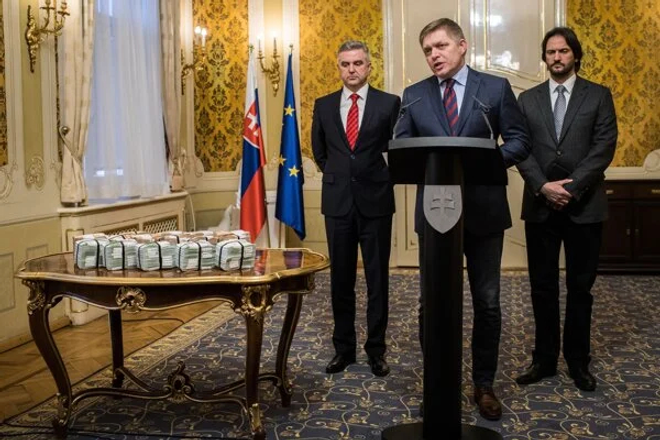Four years since the murder of Slovak investigative journalist Ján Kuciak and his fiancée Martina Kušnírová, US director Matt Sarnecki shot the documentary The Killing of a Journalist to remember them both. While he did it in a way an international audience can understand it, even Slovaks who think they have already read and heard everything about the murder will see unprecedented footage with an unexpected emotional charge, writes the daily SME.
Even with many articles depicting the timeline of the murder, portraying the accused and sentenced individuals and bringing light to Kuciak’s work, the audience can still find new bits uncovering more intimate, humane parts of the story.Even with many articles depicting the timeline of the murder, portraying the accused and sentenced individuals and bringing light to Kuciak’s work, the audience can still find new bits uncovering more intimate, humane parts of the story.
Daily life of a journalist
“Heated conflicts, warzones and riled demonstrations, those are the most likely places for journalists to die. The movie shows that investigative journalism is just as dangerous,” said critics from Variety magazine after the premiere in Toronto. After the screening’s success, the movie faced a new challenge – a Czech-Slovak audience at the movie festival in Karlovy Vary, the Czech Republic.
Director Matt Sarnecki depicts Ján Kuciak as a young man. The evening when he was murdered alongside his fiancée, the two were caught drinking tea and coffee, laptops on a table. Martina had been looking at wedding dresses as they planned to hold a wedding in May.
Some audience members might want to look away from scenes with the police and the shooter Miroslav Marček. The detailed reconstruction of the murder is depicted in a dreadful manner as the shooter recounts his act. In his words, he did not even have to check on Kušnírová, the shot was clear.
Other chilling parts portrayed the confrontation of middlemen Alena Zsuzsová, sentenced to 21 years for murder, and Zoltán Andruskó, the latter being the first to be convicted after cooperating with the police. He agreed to a sentence of 15 years in December 2019.
An emotional tragedy
The movie does not revolve around the murderers. Kuciak’s colleague Pavla Holcová has the main word. After receiving the murder case file via police contacts, Holcová worked with an international web of investigative journalists called the Organized Crime and Corruption Reporting Project. The journalists explained the connections between oligarchs and politicians, now bringing them to a wide audience.
The story’s timeline is then backed with measures taken by the police, advocates’ statements and a few images portraying the country’s sociological background. Yet the relatively unusual image of an unsuspecting country with a functional democracy clashes with a few absurdities. The image of former PM Robert Fico (Smer chair) with one million euros on a table, nervous former police president Tibor Gašpar after the killing, and stripped advisor Mária Trošková – even with a lack of explanatory content, a global audience is able to put the pieces together.
Director Sarnecki remains optimistic – though in Slovakia someone would like to eliminate journalists in the same way as in Russia, in contrast to the latter, this topic can at least be discussed in Slovakia. From his film, one can feel admiration for the movement that Ján Kuciak's murder created in society and politics, along with the changes required by the findings in the article published after Kuciak's death.
Kuciak’s colleague Holcová disagrees and repeatedly voices her regrets.
“I just wish we had been able to protect him better. I underestimated the situation and did not realize that investigative journalists could face such threats,” she repeats several times in the movie.
© Sme

 Former police prezident Tibor Gašpar, former PM Robert Fico and former interior minister Robert Kaliňák with million euros on a table after the murder of Ján Kuciak and Martina Kušnírová. (source: Jozef Jakubčo, Sme)
Former police prezident Tibor Gašpar, former PM Robert Fico and former interior minister Robert Kaliňák with million euros on a table after the murder of Ján Kuciak and Martina Kušnírová. (source: Jozef Jakubčo, Sme)